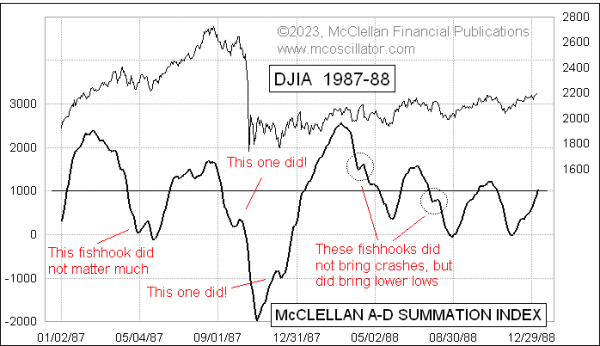Revisiting 1987: How the Stock Market and Fishhoks Connect
For many analysts, the 1987 stock market crash has been a major topic of conversation in recent years. With the worldwide economic turmoil resulting from the COVID-19 pandemic, revisiting the crash of ’87 can serve as a valuable lesson, as well as provide insight into current and future market trends.
The Crash of ’87, or “Black Monday” as it is more commonly known, occurred on October 19, 1987, when the Dow Jones Industrial Average (DJIA) plummeted by more than 500 points, or 22.6%. This caused a global financial panic and wiped out billions of dollars in market value.
At the time of the crash, there were a number of contributing factors. One of these was the growing level of debt and leveraged trading, which many experts believed played a role in creating a fragile system of borrowing and lending. The Shearson Lehman Brothers/American Express merger had caused an upturn in stock market speculation as investors rushed to capitalize on the market’s record-breaking bull run. Meanwhile, the Federal Reserve had been raising interest rates to combat inflation, which may have added to the market’s volatility.
Additionally, computerized trading, which was in its infancy at the time, was made possible through “limit orders” and “stop-loss orders.” These orders, known collectively as Fishers’ Paradox, allowed investors to place specific buy and sell orders that kicked in when predetermined thresholds were met. This allowed investors to reap larger profits, but it also created a scenario where a large number of investors could all be selling at the same time, leading to the sharp crash on Black Monday.
Today, the “circuit-breaker” rule, which was introduced after the crash, is designed to prevent future Black Mondays by using market-wide shutdowns of trading activity. It has been effective in preventing a recurrence of the 1987 crash, but it has yet to be tested under similar circumstances.
Today’s investors, particularly those who are new to the market, should take caution when making investments, as volatile market conditions can always result in unpredictable losses. With this in mind, revisiting the Crash of ’87 serves as a valuable reminder to be cautious and think long term when investing.
For many analysts, the 1987 stock market crash has been a major topic of conversation in recent years. With the worldwide economic turmoil resulting from the COVID-19 pandemic, revisiting the crash of ’87 can serve as a valuable lesson, as well as provide insight into current and future market trends.
The Crash of ’87, or “Black Monday” as it is more commonly known, occurred on October 19, 1987, when the Dow Jones Industrial Average (DJIA) plummeted by more than 500 points, or 22.6%. This caused a global financial panic and wiped out billions of dollars in market value.
At the time of the crash, there were a number of contributing factors. One of these was the growing level of debt and leveraged trading, which many experts believed played a role in creating a fragile system of borrowing and lending. The Shearson Lehman Brothers/American Express merger had caused an upturn in stock market speculation as investors rushed to capitalize on the market’s record-breaking bull run. Meanwhile, the Federal Reserve had been raising interest rates to combat inflation, which may have added to the market’s volatility.
Additionally, computerized trading, which was in its infancy at the time, was made possible through “limit orders” and “stop-loss orders.” These orders, known collectively as Fishers’ Paradox, allowed investors to place specific buy and sell orders that kicked in when predetermined thresholds were met. This allowed investors to reap larger profits, but it also created a scenario where a large number of investors could all be selling at the same time, leading to the sharp crash on Black Monday.
Today, the “circuit-breaker” rule, which was introduced after the crash, is designed to prevent future Black Mondays by using market-wide shutdowns of trading activity. It has been effective in preventing a recurrence of the 1987 crash, but it has yet to be tested under similar circumstances.
Today’s investors, particularly those who are new to the market, should take caution when making investments, as volatile market conditions can always result in unpredictable losses. With this in mind, revisiting the Crash of ’87 serves as a valuable reminder to be cautious and think long term when investing.










